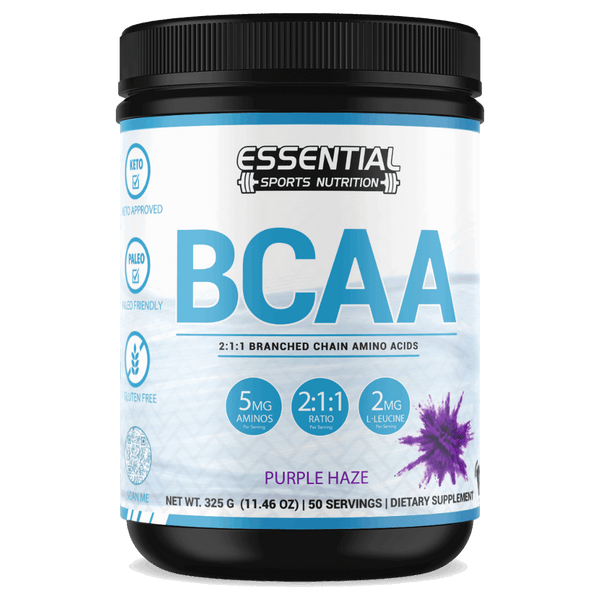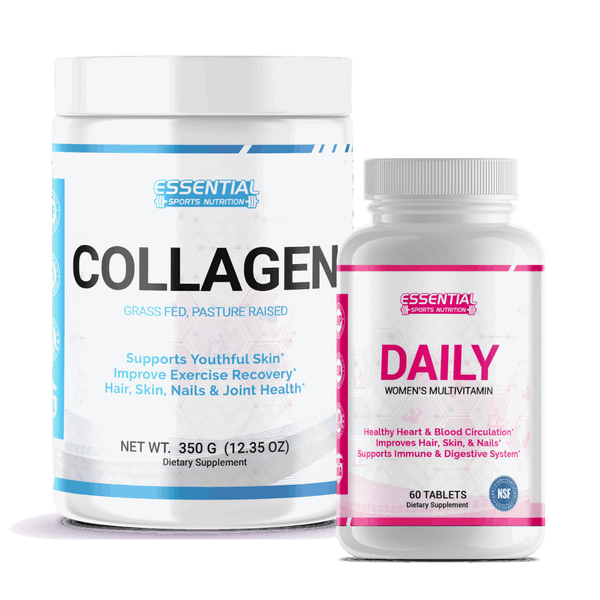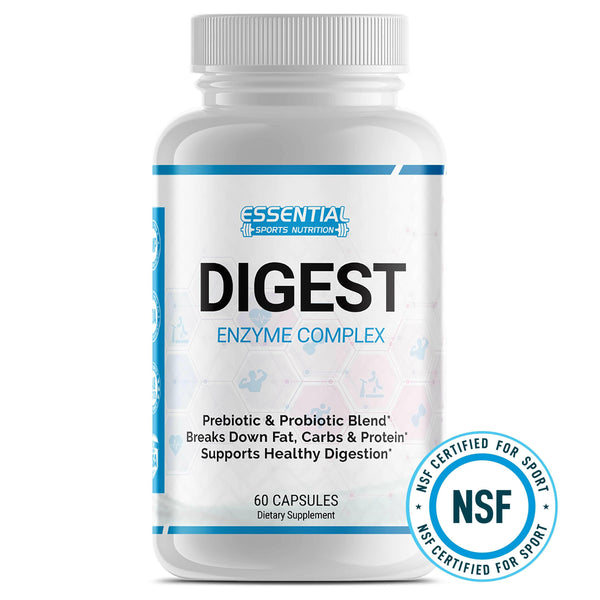Effective Exercises for Tennis Elbow: Strengthening Techniques
In the orchestra of your body, your arms are the industrious violinists, and tennis elbow is the sour note disrupting the harmony.
You've probably felt that nagging pain on the outside of your elbow, a telltale sign that you've been overworking your tendons. It's not just tennis players who suffer; painters, carpenters, and even you, with your daily tasks, might experience this condition.
You're looking for relief, and rightly so. The key to silencing the pain lies in the gentle, yet deliberate strengthening and stretching of your forearm muscles. Wrist turns, lifts, and extensions aren't just mundane movements; they're your silent warriors in the battle against discomfort.
And while you're eager to swing back into action without that piercing pain, know this: the path to recovery requires patience and the right techniques. Stay tuned for the essential exercises that can help you regain your strength and flexibility, but remember, the road ahead is one of gradual progress, not instant miracles.

Key Takeaways
-
Tennis elbow is caused by inflammation of the tendons connecting forearm muscles to the elbow due to repetitive motions or overuse.
-
Strengthening the muscles around the elbow joint is essential for managing and treating tennis elbow.
-
Incorporating a wrist extension stretch into the routine can improve flexibility and range of motion in the forearm and wrist.
-
Elbow flex and extend exercises should be performed within a pain-free range and with proper technique, gradually increasing intensity and repetitions as the elbow heals.
Understanding Tennis Elbow
Tennis elbow, clinically known as lateral epicondylitis, arises when the tendons connecting your forearm muscles to the elbow become inflamed due to repetitive motions or overuse. This condition isn't exclusive to athletes; anyone engaging in repetitive activity that strains the forearm can develop tennis elbow. The symptoms of tennis elbow include pain and tenderness on the outside of the elbow, which can extend into the forearm and wrist.
To manage and help treat tennis elbow, it's essential to strengthen the muscles around the elbow joint. Physical therapy exercises are particularly beneficial. These exercises to help strengthen the forearm muscles and improve the condition should be done with proper form to avoid further injury. Strengthening exercises, such as wrist extensions, wrist flexions, and towel twists, target the affected area and can gradually restore flexibility and strength.
If you're experiencing persistent pain, it's crucial to consult a healthcare professional before starting any exercise regimen. They can provide a diagnosis and recommend an appropriate treatment plan, which may include rest, medications for pain and inflammation, and a tailored physical therapy program.
Wrist Extension Stretch
Now, let's turn your attention to the wrist extension stretch, a pivotal component in managing tennis elbow.
You'll find this stretch not only improves flexibility but also helps release tension in the forearm when executed with proper technique.
Incorporate it frequently into your daily regime, especially before strenuous activities, to bolster recovery and prevent further injury.
Benefits of Stretching
Incorporating a wrist extension stretch into your routine can significantly enhance the flexibility and range of motion in your forearm and wrist, crucial for those suffering from tennis elbow. Regularly performing this stretch can help alleviate tension in the wrist extensor muscles and tendons, contributing to your exercise program and aiding in the treatment of tennis elbow.
| Benefit | Impact on Tennis Elbow |
|---|---|
| Improve Flexibility | Promotes a normal range of motion |
| Alleviate Tension | Reduces tightness in muscles and tendons |
| Reduce Injury Risk | Improves blood circulation and muscle elasticity |
| Relieve Discomfort | Helps treat tennis elbow-related pain |
Proper Extension Technique
To effectively perform a wrist extension stretch, extend your arm fully and bend your wrist backward, applying gentle pressure with your opposite hand to deepen the stretch. This exercise is essential for those with tennis elbow, or lateral epicondylitis, to stretch and strengthen the muscles around the elbow and forearm.
When engaging in wrist extension exercises:
-
Start from the proper extension technique:
-
Keep your arm straight.
-
Use your opposite hand for gentle pressure.
-
Feel a stretch without pain:
-
Hold for 20-30 seconds.
-
Repeat 2-3 times.
Always consult a healthcare professional before starting any new exercise regimen. They can ensure you're using correct form to avoid further injury and provide guidance tailored to your specific condition.
Wrist Flexion Exercise
Begin the wrist flexion exercise by positioning your forearm securely on a flat surface, ensuring your wrist extends slightly over the edge for optimal range of motion. With your palm facing down, slowly bend your wrist towards the palm, then gently release it back up. Aim for 2 sets of 10-15 repetitions. This movement is crucial for strengthening the muscles around your arm and elbow, which can help alleviate symptoms associated with tennis elbow (lateral epicondylitis).
Ensure proper form:
-
Keep your forearm stable to avoid unnecessary strain.
-
Perform the movement in a slow and controlled manner.
Progressing the exercise:
-
Start without any weight to focus on technique.
-
Gradually incorporate light dumbbell hand weights (1-3 lbs.) to increase intensity.
Regularly incorporating this exercise can promote healing, especially when combined with rest and ice for managing inflammation. If you experience persistent pain, it's important to see a doctor to rule out conditions like golfer's elbow, which may require different management strategies. Remember, exercises can help, but they're most effective when tailored to your individual needs by a healthcare professional.
Forearm Supination Technique
Place your forearm on a stable surface with your elbow bent at a 90-degree angle and hold a weight in your hand to commence the forearm supination technique, an exercise that targets and strengthens the supinator muscle pivotal for elbow and wrist stability. This is particularly beneficial if you're dealing with tennis elbow, or lateral epicondylitis, a condition characterized by tenderness around the outside of the elbow.
Starting with your palm facing down, slowly rotate your wrist so that your palm faces upwards, then return to the starting position. You should feel the muscles on the outer part of your forearm engaging. It's important to perform this movement in a controlled manner; rushing can lead to further injury.
Gradually increase the weight as the exercise becomes easier to continue to challenge the muscle without causing pain. If you experience significant discomfort, it's essential to stop and consult a physical therapist. They can ensure you're using the correct form and technique, which is critical to effectively help treat your condition.
Use your opposite hand to assist if needed, especially when starting out or if the weight feels too heavy. This exercise, done regularly and with proper form, can be a powerful tool in your recovery arsenal.
Towel Twist Method
When you're dealing with the discomfort of tennis elbow, which often stems from repetitive strain, it's crucial to focus on strengthening the right muscles. The towel twist exercise is a fantastic workout that not only targets the supinator muscle, but also works the wrist extensors and flexors, the very muscles that need attention for those suffering from tennis elbow. Before you jump into trying out this exercise, it's wise to get the green light from a healthcare professional if you're experiencing any pain.
How to Do the Towel Twist
-
Start by holding a towel out in front of you, arms straight, hands facing down.
-
Twist the towel by rotating your hands in opposite directions, similar to how you'd squeeze water out of it.
-
Make sure your elbows are close to your body to really work those forearm muscles.
-
Keep your actions slow and steady.
Enhance Your Workout
-
For a bigger challenge, use a thicker towel or add some kind of resistance.
-
Twist while pulling against something sturdy, like a doorknob.
-
To up the ante, hold each twist a little longer.
Workout Goals
-
Aim for 2 sets, doing 10 twists in each.
-
Hang on to each twist for 5 seconds to really activate those muscles.
Elbow Flex and Extend
Moving on to the elbow flex and extend exercises, you'll find that proper technique is crucial in preventing further injury.
You must ensure you're performing these movements within a pain-free range, gradually increasing intensity and repetitions as your elbow heals.
Consult with a physical therapist to tailor these exercises to your specific recovery needs, ensuring you're on the path to regaining full elbow function.
Identifying Proper Technique
To effectively manage tennis elbow, it's crucial to master the correct technique for flexing and extending your elbow. Proper technique can help alleviate symptoms of lateral epicondylitis, ensuring exercises are both safe and beneficial.
-
For Flexion:
-
Keep your wrist straight to avoid unnecessary strain.
-
Engage your muscles slowly and with control.
-
For Extension:
-
Focus on a smooth, steady movement.
-
Prevent hyperextension by stopping at a comfortable angle.
These exercises, when performed correctly, can gradually reduce typical symptoms. If you experience much pain during these movements, it's important to consult a doctor.
Ensure the information you follow for managing tennis elbow is medically reviewed and supported by peer-reviewed studies for optimal outcomes.
Gradual Intensity Increase
Begin your tennis elbow rehabilitation by gently flexing and extending the elbow, aiming for 10-15 repetitions while keeping the intensity low to prevent further strain. As your comfort level increases, you may add light hand weights or resistance bands to gradually increase the intensity. It's crucial to monitor any pain; keep it within a tolerable range of 0-5. If pain exceeds this or persists post-exercise, it's important to modify or lessen your repetitions.
Consult a healthcare professional or physical therapist to ensure correct techniques and a safe increase in intensity. This guidance, reviewed by experts like Gregory Minnis and William Morrison, ensures our content in the health and wellness space is accurate and reliable.
| Repetitions | Intensity Level | Pain Monitoring |
|---|---|---|
| 10-15 | Low | Pain 0-5 |
| Increase as comfortable | Add weights/bands | Modify if >5 |
| Follow professional advice | Gradual increase | Stop if intense |
Strengthening With Dumbbells
Strengthening your forearm muscles through wrist exercises with dumbbells is a proven strategy to combat tennis elbow. When you've been diagnosed with lateral epicondylitis, also known as tennis elbow, targeted exercises can make a significant difference in your recovery process.
-
Wrist Extension and Flexion:
-
Start by holding a dumbbell with your palm facing down.
-
Slowly lift your wrist upward, then slowly lower it.
-
Gradually increase the weight as your strength improves.
Engaging in these exercises helps to fortify the muscles around the elbow, providing better support and reducing stress on the affected tendons. Remember to:
-
Wrist Turn with Weight:
-
Begin with a light dumbbell, palm facing up.
-
Rotate your wrist to face down, then back up.
-
Keep movements controlled to prevent further injury.
Incorporate these strengthening exercises with dumbbells throughout the day to ensure consistent progress. It's crucial to listen to your body and not overdo it. If you experience pain, step back and consult with a healthcare professional. The goal is gradual improvement, ensuring our content focuses on safe and effective methods for tennis elbow rehabilitation.
Tennis Elbow FAQs:
Q: What are some effective exercises for tennis elbow?
A: Some effective exercises for tennis elbow include wrist extensor strengthening exercises, finger stretches, and forearm strengthening exercises.
Q: What are the symptoms of tennis elbow?
A: The symptoms of tennis elbow include pain and tenderness around the elbow, especially on the outer part of the elbow, and weakened grip strength.
Q: How can physical therapy help with tennis elbow?
A: Physical therapy can help with tennis elbow by providing targeted exercises to strengthen the muscles and improve function, as well as incorporating techniques for pain relief and promoting healing.
Q: What is the significance of wrist extensor exercises in preventing and treating tennis elbow?
A: Wrist extensor exercises are significant in preventing and treating tennis elbow as they specifically target the muscles that are commonly affected, helping to strengthen and improve the condition.
Q: What are finger stretches and how do they help with tennis elbow?
A: Finger stretches involve gently stretching the fingers and hand to improve flexibility and relieve tension, which can be beneficial in reducing the symptoms of tennis elbow and promoting recovery.
Q: How can one prevent tennis elbow from worsening?
A: Tennis elbow can be prevented from worsening by avoiding repetitive or strenuous activities that exacerbate the condition, using proper techniques and equipment (such as a properly sized tennis racket), and incorporating relevant strengthening and stretching exercises.
Q: When should I consult a doctor or physical therapist for tennis elbow?
A: It’s important to consult a doctor or physical therapist if you experience persistent elbow pain, have difficulty with simple tasks due to elbow discomfort, or if symptoms worsen despite trying exercises to strengthen the affected area.
Q: What exercises can help improve the condition of tennis elbow?
A: Exercises to strengthen the forearm muscles and improve function can help improve the condition of tennis elbow, as they target the affected area, enhancing strength and flexibility.
Q: Can tennis elbow also be known as lateral epicondylitis?
A: Yes, tennis elbow is also known as lateral epicondylitis, which refers to the inflammation or irritation of the tendons on the outer side of the elbow.
Q: Are anti-inflammatory measures beneficial for tennis elbow?
A: Yes, anti-inflammatory measures, such as using over-the-counter medications or applying ice packs, can be beneficial for managing the discomfort associated with tennis elbow, aiding in pain relief and reducing inflammation.
Other Frequently Asked Questions:
What Is the Fastest Way to Cure Tennis Elbow?
You're likely seeking the quickest remedy for tennis elbow.
It's crucial to understand that healing time varies, but you can accelerate recovery with consistent treatment.
Ensure you rest the affected arm, apply ice, and consider NSAIDs for pain relief.
A physician may suggest physical therapy, which includes specific exercises and stretches.
Always follow professional advice and avoid rushing your recovery, as this can lead to further injury.
What Upper Body Exercises Can I Do With Tennis Elbow?
You're itching to stay fit despite your elbow's plea for a break. Aim for exercises that don't strain it.
Go for leg workouts, like squats or lunges, and engage in core strengthening.
If your heart's set on upper body moves, stick to gentle stretches and light-isometric exercises.
Remember, your elbow's recovery is paramount, so prioritize low-impact activities that ensure you remain active without hindering the healing process.
Keep it light, keep it right!
Is Squeezing a Ball Good for Tennis Elbow?
Yes, squeezing a ball can be beneficial for tennis elbow. It strengthens your forearm muscles and boosts grip strength, aiding in the recovery process.
Start with gentle squeezes and gradually increase the intensity to prevent aggravating your condition. Incorporating this into a wider exercise regimen can help your tendons withstand repetitive stress and hasten your return to regular activities.
However, always ensure you're not overdoing it to avoid further inflammation.
Will Tennis Elbow Go Away With Exercise?
Yes, tennis elbow can improve with regular, targeted exercise. You'll need to focus on strengthening and stretching the muscles around your elbow.
It's essential to start slowly and increase the intensity gradually to avoid aggravation. If you're consistent and listen to your body, combining these exercises with rest and proper technique can lead to significant relief.
However, remember it's best to consult a professional for a personalized plan.
Conclusion
You've now armed yourself with exercises to tackle tennis elbow—a stitch in time saves nine, as they say. Remember, consistency is key, and pain should be your guide; if it's shouting, you're pushing too hard.
Consult with your therapist to tailor these exercises to your needs, and keep at it. With diligence and proper technique, your road to recovery is paved with promise.
Stay patient, stay positive, and let's get that elbow back in the game!




























